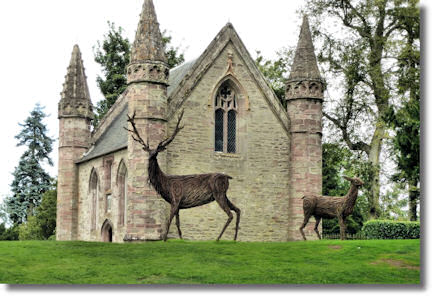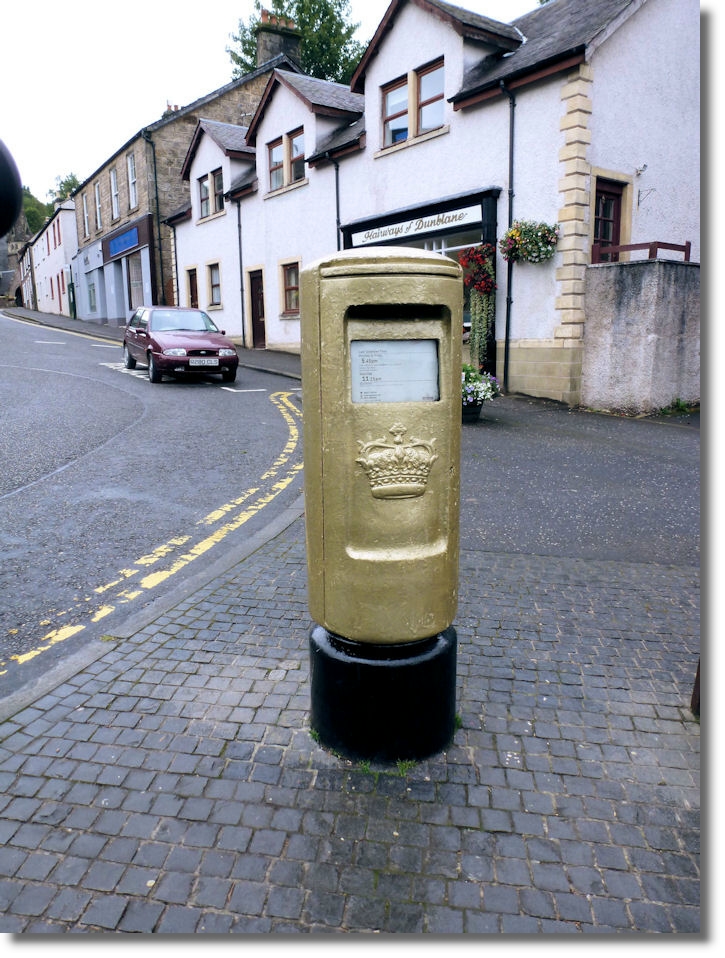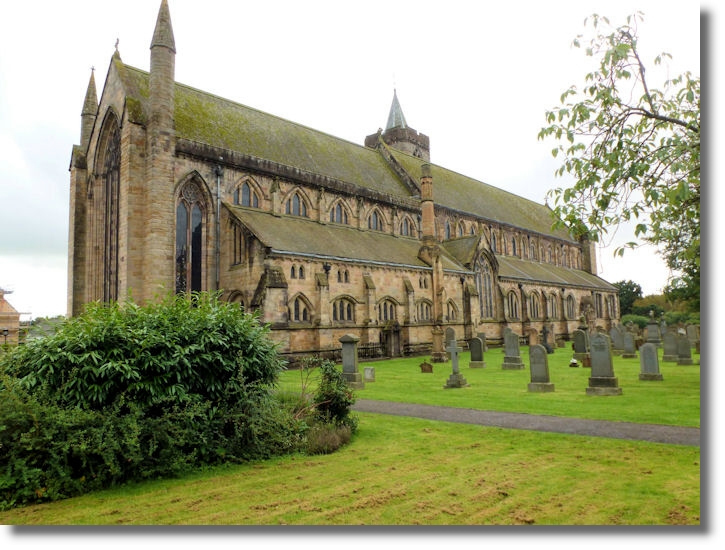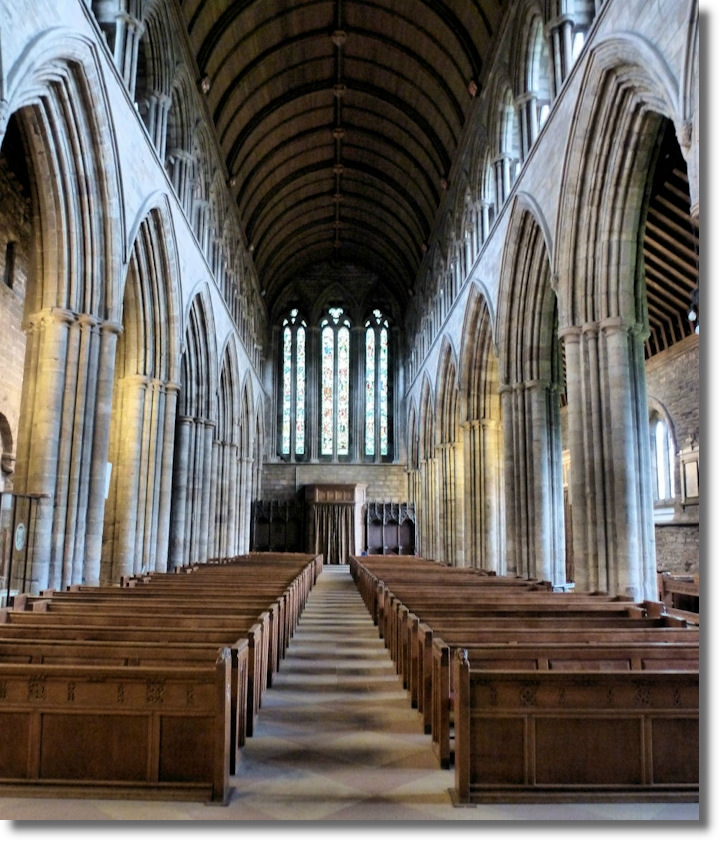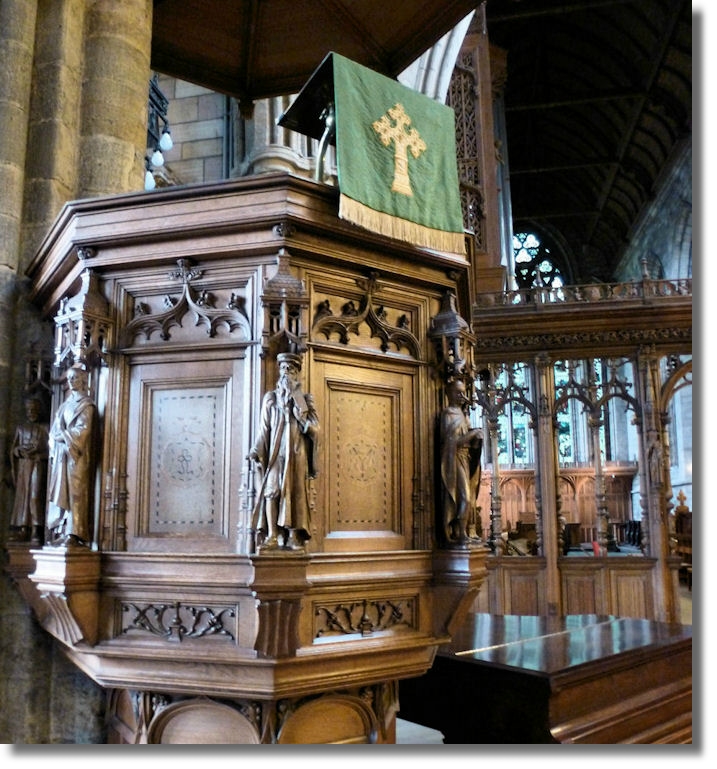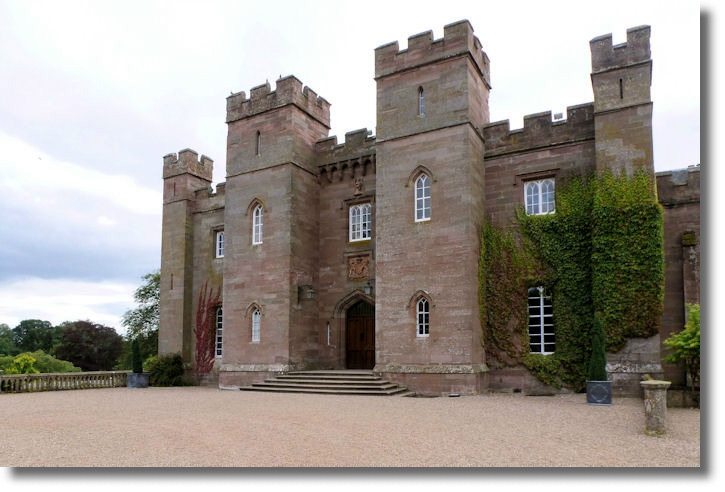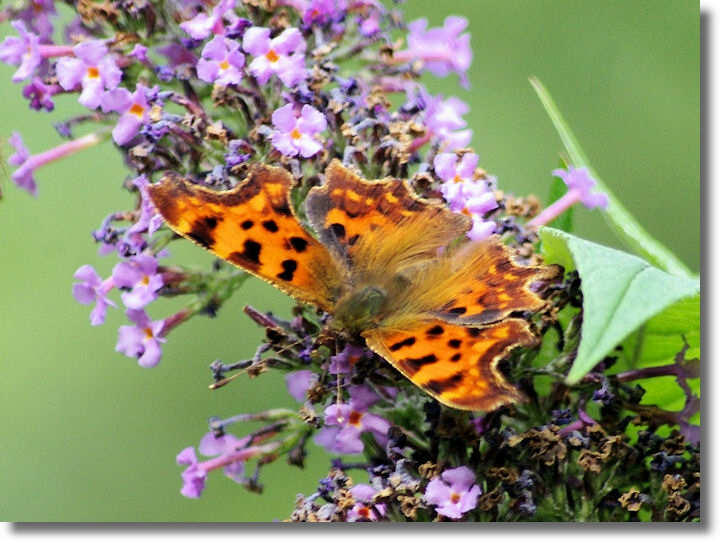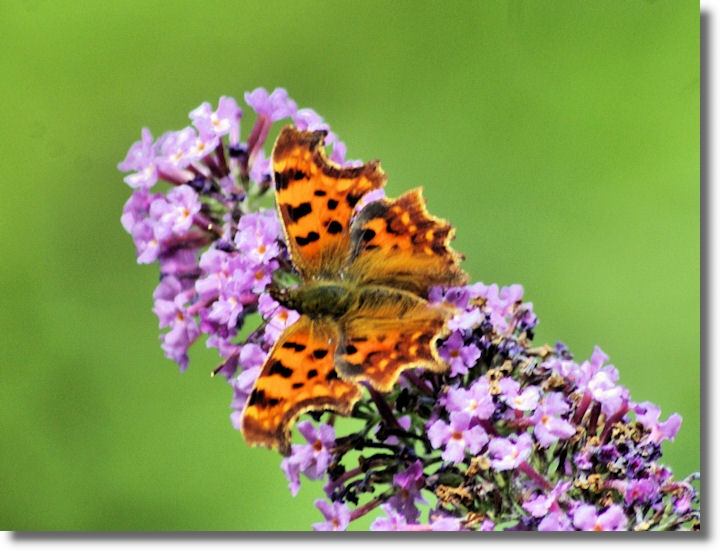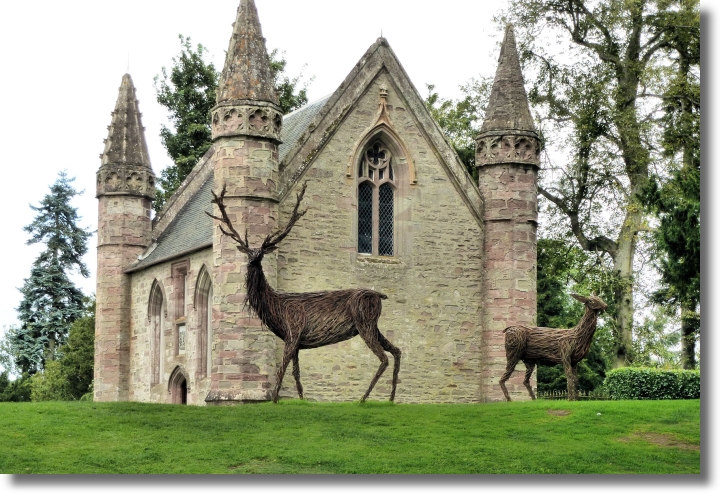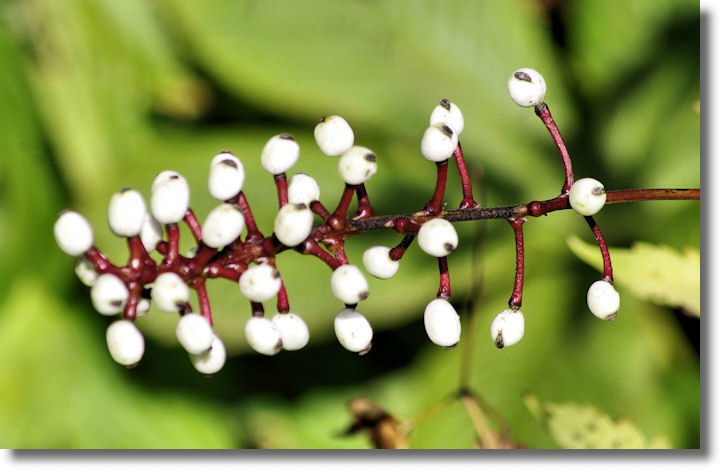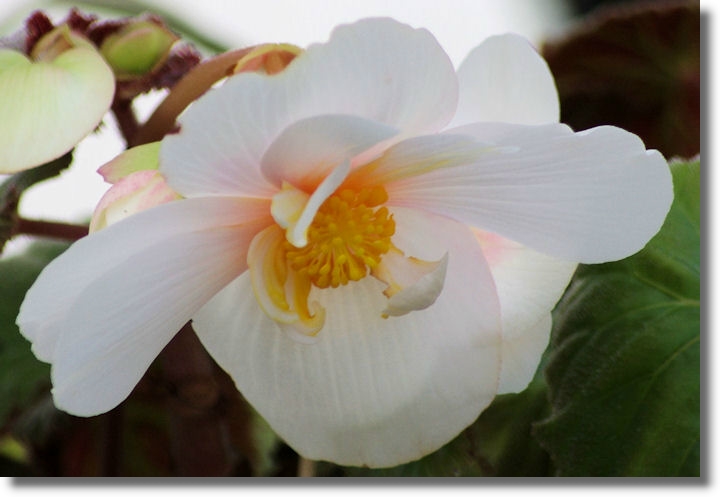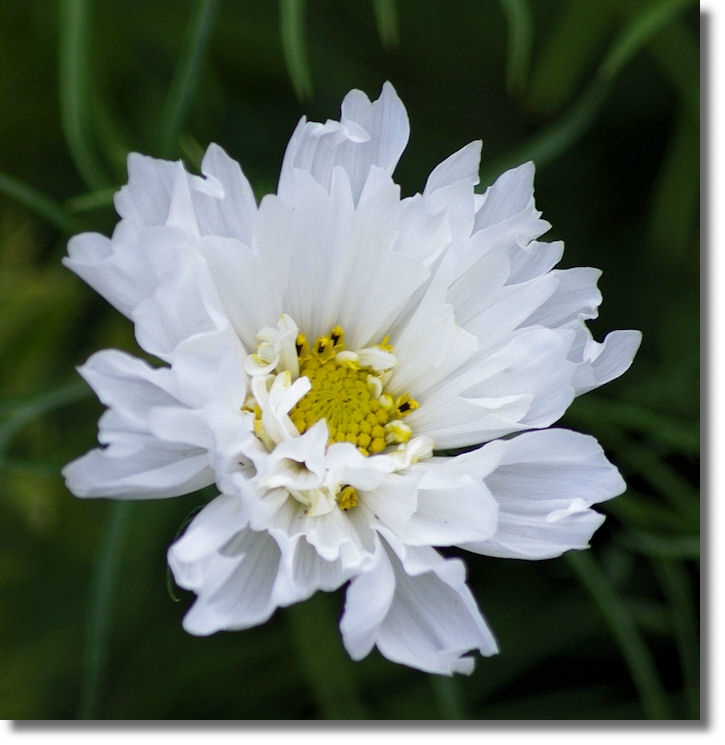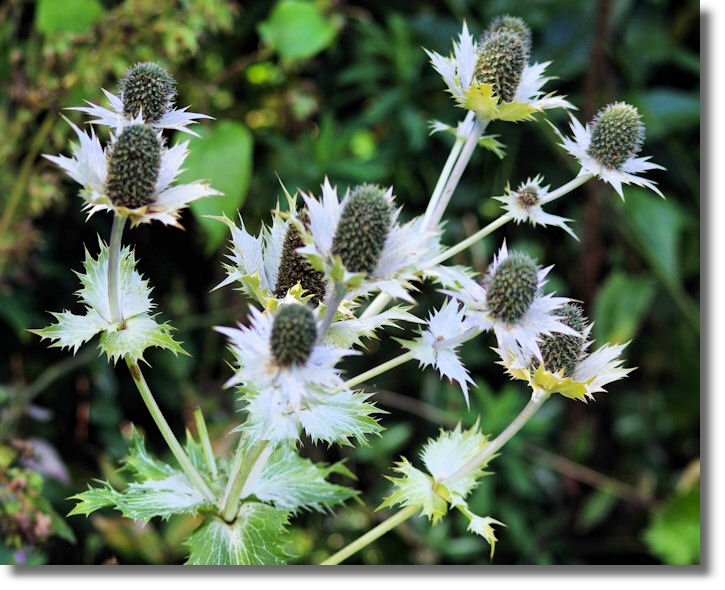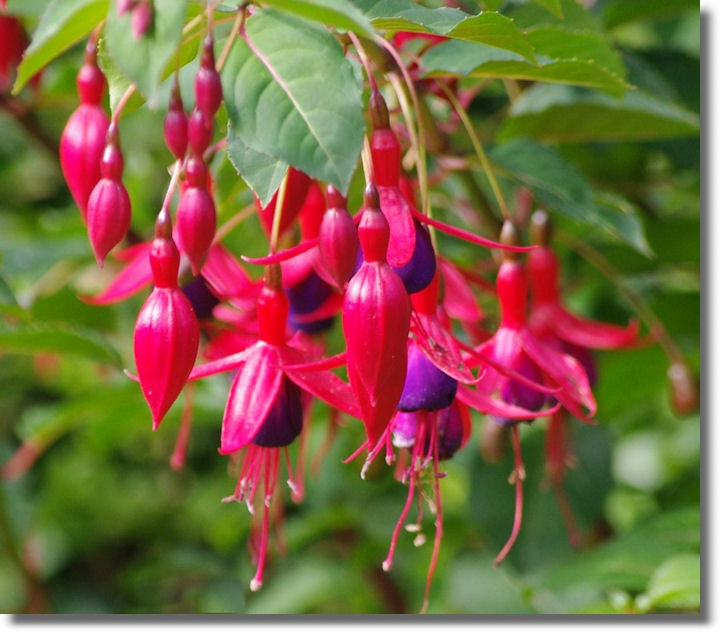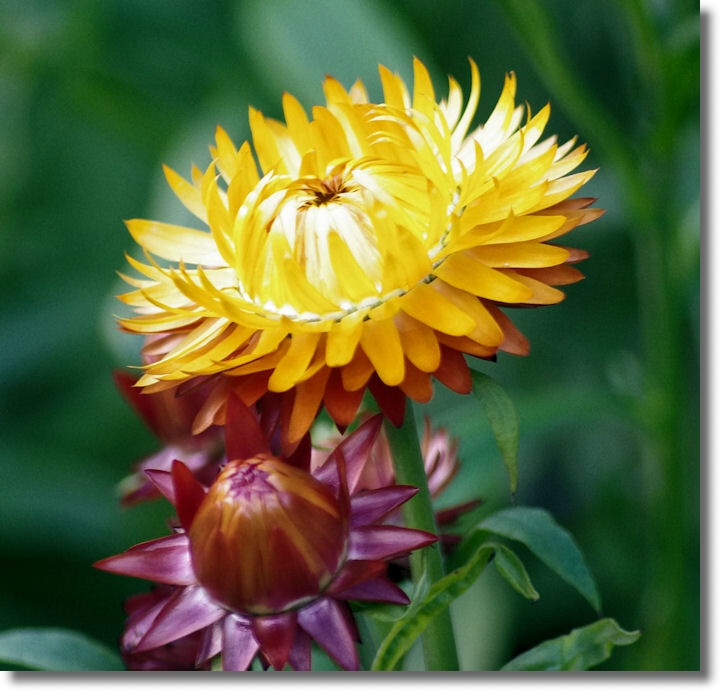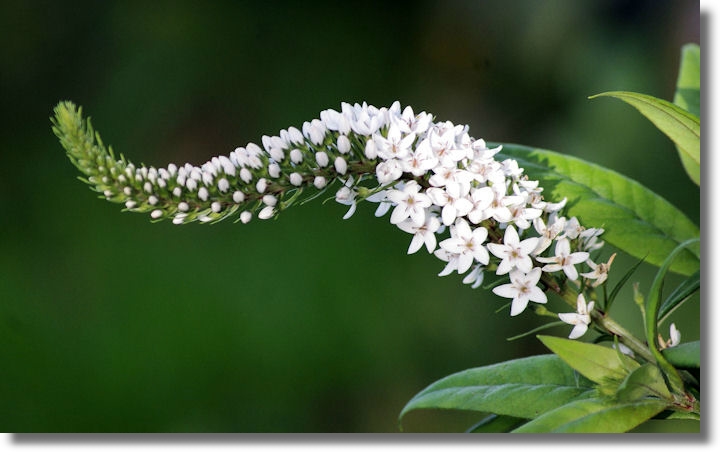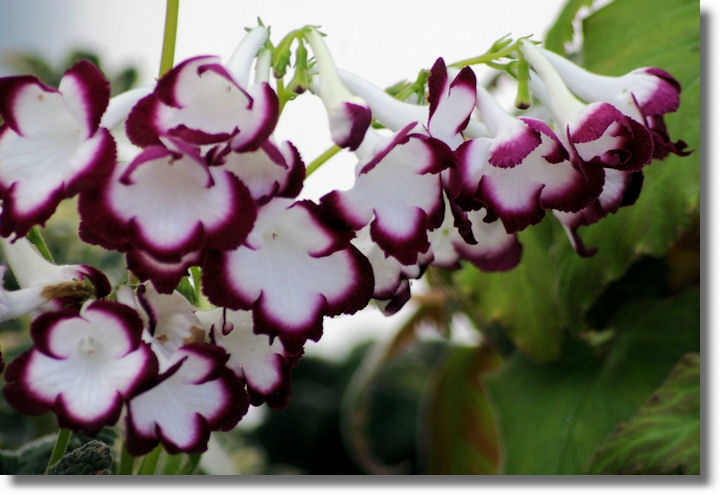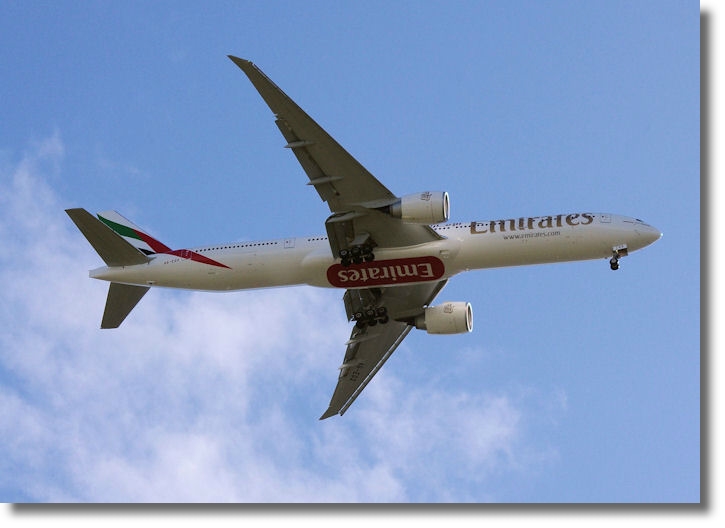Scottie's Monthly Photo Diary
- September 2012
Background
I never go anywhere in Scotland without my camera and I take photographs wherever I go. Sometimes I go somewhere specifically to take photographs with a view to adding another page to the Rampant Scotland site. On other occasions I just see something that makes an attractive picture or else it's another graphic to add to the library to perhaps use on a future occasion. This is a selection of the best photographs I took in September 2012, with a commentary on each one. It thus forms a pictorial diary of my travels during the month which can be shared by everyone!Note also that in addition to the illustrations below there is also a special photo diary of the Battle of Britain Air Show held on 15 September. This has a selection of 25 pictures of the aircraft in the air and on the ground.
Dunblane
Those of you who are familiar with the red post boxes in the UK will recognise that this one in Dunblane is a bit different - in each town associated with an Olympic gold medallist soon after a member of Team GB won that supreme award in their sport this year, the Post Office painted a post box in a matching gold colour. Dunblane is of course where tennis star Andy Murray was born and he spent the first 15 years of his life there. Andy not only won the tennis gold medal at the Olympics (and a silver in the mixed doubles) but followed that up by winning the US Open Tennis Championship in New York, the first British man since 1936, to win a Grand Slam singles tournament (and the first Scottish-born player to win a Grand Slam final since 1896!). Andy made an emotional return to Dunblane soon after his US triumph and was cheered by a large crowd of well-wishers from Dunblane.
The gold painted pillar box is within sight of Dunblane Cathedral, pictured here. Dunblane (fort of Blane) is named after St Blane, who is believed to have been a Briton from the kingdom of Strathclyde who was educated in Ireland before 600AD. Blane is said to have been given a dun or fort as a place to build his monastery, near the Allan Water which flows through Strathallan to the north. A stone church (earlier ones may well have been made of wood) was built in the 12th century. Little remains of this building but the lower four floors of the tower was built around the time of King David (1124-1153).
After the church reformation in the 16th century, the Presbyterian church had no need for the large number of clergy and the ceremonies of the Roman Catholic church and as a parish church only the former choir continued in use. The rest of the building was allowed to deteriorate and by 1600 the roof of the nave had collapsed. Restoration work on the cathedral was begun towards the end of the 19th century. After re-roofing the nave, the windows were reconstructed and gradually, over the years, magnificent new stained glass was installed, a feature for which the cathedral is understandably famous.
The impressive pulpit dates from the 19th century restoration and has seven finely carved figures reflecting the history of the cathedral. St Blane is of course featured along with King David I who founded the bishopric of Dunblane, Clement, Bishop of Dunblane from 1233-1258 who built the original stone building and John Knox, the main inspiration of the Reformation in Scotland.
Scone Palace
An Augustinian Abbey was built at Scone by Alexander I in the 12th century but was destroyed during the Reformation in the 16th century. Parts of a 17th century house which was built on the site of the Abbey were incorporated into Scone Palace when it was built in 1802 by the 3rd Earl Mansfield. The first Lord Mansfield, (a descendant of Freskin de Moravia, a Flemish noble who came to Scotland and founded the Murray family), had branched off from the Earls of Atholl (later the Dukes of Atholl). The Mansfields later became Lord Stormont. The Third Lord Stormont held the last coronation to be held in Scotland when Charles II was crowned at Moot Hill at Scone. A later member of the family, a brilliant lawyer, was Lord Chief Justice of England and Chancellor of the Exchequer (all at the same time!) and was created Earl of Mansfield. The present Lord Mansfield is also the 13th Viscount Stormont and Lord Scone, 11th Lord Balvaird and Hereditary Keeper of Robert the Bruce's castle of Lochmaben in Dumfries.
Butterflies have been hard to find this year, largely due to the poor, wet, summer. So it was a delight to find a good number of Peacock butterflies as well as three examples of my favourite - the Comma butterfly. Both types can be seen in this picture feeding on the flower of a buddleja bush in the appropriately named butterfly garden at Scone.
The Comma is a favourite of mine partly because I photographed one as far back as 2004 at a time when many butterfly books were asserting that it was extinct in Scotland - though still to be seen further south in England. Initially there was a suggestion that an enthusiast might have incubated some Comma eggs and released them once they had hatched. But as numbers sighted have increased in recent years it appears that the Comma has become established in Scotland and is breeding and hibernating over winter, mainly in the east of Scotland. The butterfly garden at Scone has become a fairly reliable place to see them, particularly at this time of year
The Comma's scalloped, ragged wings with black marks on an orange-black background make it a most attractive butterfly. The underside of the wings, however, are dark brown, almost black, with the distinctive, white, comma-shaped marking standing out. The dark underside provides camouflage for hibernating as the wings look like dried leaves when folded. The Comma is usually found on the edge of woodland from May to September - and the Scone butterfly garden is beside a pinetum (an area of land where pine trees and other conifers are grown) in the grounds of Scone Palace.
At first sight looking like real deer, the sculptures which have recently been added on the top of Moot Hill seem very realistic in this setting. Moot Hill was where noblemen of medieval Scotland swore allegiance to the king. A replica of the Stone of Destiny upon which the kings of Scotland used to be crowned is also located on this mound. The chapel behind the "deer" (woven from tree branches) commemorates David Murray, 1st Lord Stormont who helped to resolve a long-running, bitter feud between two of his friends, the Marquis of Tullibardine and the Earl Marischal in the early 16th century.
Greenbank Gardens
These are the berries of Actaea, commonly called baneberry or bugbane. This perennial plant is mainly grown for these striking berries - which, however, are highly poisonous. The plants grow to 2-3 feet and the small feathery flower spikes in summer are followed by these pea-sized berries in autumn. Actaea contains cardiogenic toxins than can have an immediate sedative effect on human heart muscle. The berries are the most poisonous part of the plant (hence the name baneberry). Children have been poisoned by eating the waxy, shiny red or white berries. Swallowing the berries can lead to cardiac arrest and death. It is toxic to rabbits but harmless to birds.
There is a small heated greenhouse in Greenbank Gardens which provides space for the gardeners to grow cuttings and seeds for the garden. But it is also used for an attractive display of tender plants such as this delicate begonia.
Cosmos originated in scrub and meadow areas in Mexico where most of the species occur, and in Florida and the southern United States, Arizona, Central America, and South America. These herbaceous plants grow up to 2/3 feet tall in a wide variety of colours. This white form is named Cosmos Seashells and has conical petals.
Eryngium is a genus in the family Apiaceae of about 230 species of annuals and perennials with hairless and usually spiny leaves, and dome-shaped umbels of flowers resembling those of thistles. Some species are native to rocky and coastal areas, but the majority are grassland plants. Common names include Sea-holly and Eryngo.
Fuchsia is a family of flowering plants that consists mostly of shrubs or small trees. The first, Fuchsia triphylla, was discovered on the Caribbean island of Hispaniola (present day Dominican Republic and Haiti) in 1703 by the French monk and botanist, Charles Plumier. He named the new genus after the renowned German botanist Leonhart Fuchs (1501–1566). The majority of fuchsia species are native to Central and South America. A small additional number are found on Hispaniola and New Zealand and Tahiti. The vast majority of garden hybrids have descended from a few parent species.
Helichrysum consists of an estimated 600 species, in the sunflower family. The name is derived from the Greek words helisso (to turn around) and chrysos (gold). It occurs in Africa (with 244 species found there), Madagascar, Australasia and Eurasia. They can be in almost all colours, except blue. In addition to being attractive plants in the garden, one of their features is that when cut young and then dried, the open flowers and stalks preserve their colour and shape and can be kept in a vase for long period, certainly over winter.
Most of the Lysimachia plants we see in our Scottish gardens are tall yellow-flowering plants. But this Lysimachia clethroides (common name Gooseneck Loosestrife), is a perennial herbaceous flowering plant that produces these white, "goose neck" flowers from July on to September.
Another of the plants found in that small glasshouse at Greenbank was Streptocarpus. They had a number of different varieties on show, including this one - Streptocarpus Roulette Cherry. Streptocarpus flowers are almost orchid-like in appearance, and hover or arch over the plant leaves. It is native to parts of Africa and Madagascar. Its name is derived from Greek via Latin, where strepto = twisted, carpus = fruit, due to the spiral shape of its seed pod. It has a common name of Cape Primrose, referring to the source of several species in South Africa and their superficial resemblance to the genus Primula.
My Own Garden
As noted above, 2012 has been a particularly poor year for butterflies in the UK but especially in Scotland. And that followed a number of declining numbers being seen in recent years. So it was particularly pleasing that in September a number of plants, specially grown in my garden to attract butterflies at this time of year, should bring in not just a number of Peacock butterflies (above) but also a Red admiral and Small Tortoiseshell (below). The Peacock will be trying to fatten up by drinking the nectar so that it has a chance to hibernate through the winter. Those that do will produce the eggs for the next generation next year.
This Red Admiral was spoilt for choice and flitted between the perennial wallflower and the well named sedum "Autumn Joy". Although the wallflower is almost over, this Red Admiral seemed to prefer it and I had to wait patiently for it to move to the sedum - I thought that made a better background for the picture! In northern Europe, it is one of the last butterflies to be seen before winter sets in. The Red Admiral is also known to hibernate (in Southern England, though, rather than in Scotland), re-emerging individuals showing prominently darker colourings than first brood examples.
The Small Tortoiseshell butterfly also hibernates during the winter and so is usually one of the first butterflies to be seen in the spring.
My house is under the flight path going into Glasgow Airport - fortunately they are still flying at about 2,000 feet. I often see the Emirates Boeing 777 from Dubai. It has left from there in the early morning and reaches Glasgow before lunchtime and flies out again around 2.30pm. The route has proved to be so popular that Emirates now operate a second daily flight in both directions later in the day.
If you want to read the other Diary entries going back to 2009, there is an Index page.
